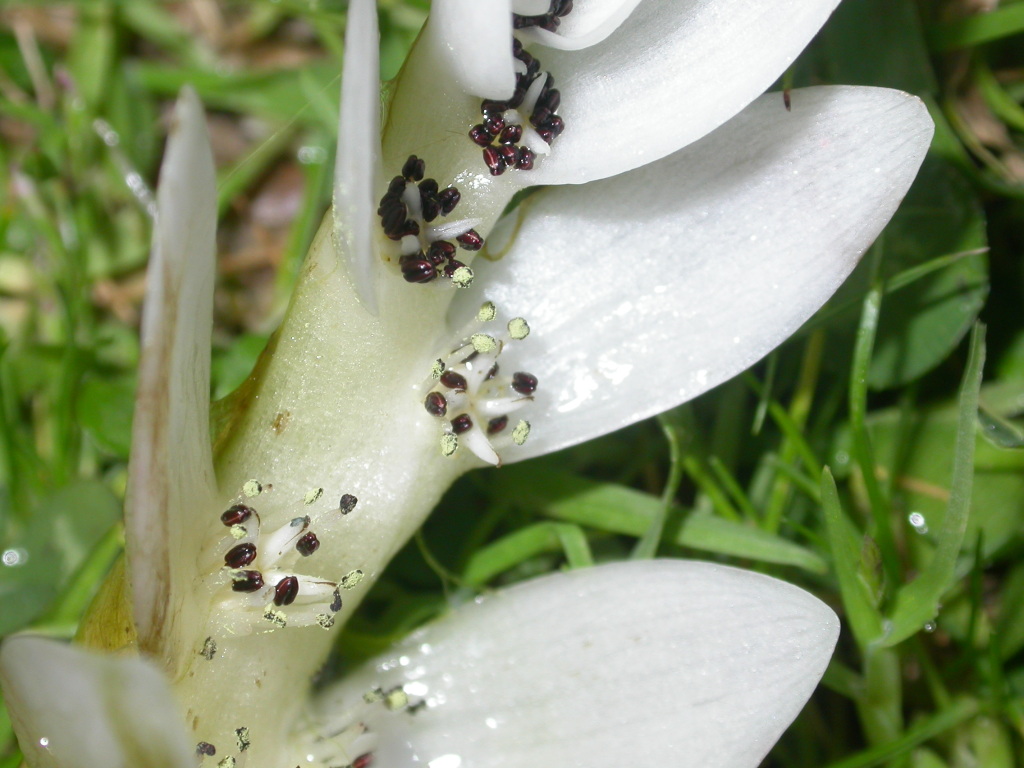Aponogetonaceae
Perennial, freshwater aquatic herbs; rhizome tuber-like and buried in the substrate, with roots forming annular series below the leaf bases on each seasonal rhizome segment. Leaves basal, more or less opposite; petiole usually long with open shortly sheathing bases; lamina narrowly ovate to linear, submerged or floating, with a few parallel veins and many connecting secondary veins. Inflorescence a simple or once to several times basally divided spike, borne on an erect, long, leafless axis which arises from the axil of every second leaf; axis projects inflorescence above the water surface. Flowers small, usually bisexual, initially enclosed by a large bract which soon falls off; perianth segments 0–6, sepaloid or petaloid; stamens free, 6 or more in 2–4 whorls (Victorian species). Carpels (2–)3–6(–9), basally and adaxially joined for one-half to two-thirds of their length, separating at maturity; each ovary distally narrowed to a short style with a ventral stigmatic groove. Fruiting carpels (2–)3–6(–9), each carpel follicle-like; seed without endosperm.
A single genus Aponogeton with c. 40 species.
When only one perianth lobe is present (as in Aponogeton distachyos) it resembles a petaloid bract. For further details on reproductive morphology, refer to Tomlinson (1982) and literature cited therein.
Conn, B.J. (1994). Aponogetonaceae. In: Walsh, N.G.; Entwisle, T.J., Flora of Victoria Vol. 2, Ferns and Allied Plants, Conifers and Monocotyledons, pp. 136–137. Inkata Press, Melbourne.
 Spinning
Spinning


